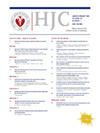使用混合深度学习模型检测和分类心电图。
IF 3
3区 医学
Q2 CARDIAC & CARDIOVASCULAR SYSTEMS
引用次数: 0
摘要
背景:心电图(ECG)是诊断心血管疾病(CVD)的重要工具,它直观地描述了心脏的电活动。为了加强正常心电图和疾病心电图之间的自动分类,必须提取一致的定性特征:通过混合深度学习(DL)方法,利用卷积神经网络(CNN)架构和变异自动编码器(VAE)技术,提高心电图分类的精确度。通过结合这些方法,我们旨在实现更准确、更稳健的心电图解读。该方法在 PTB-XL 数据集上进行了训练和测试,该数据集包含 21,799 份来自 18,869 名患者的 12 导联心电图,每份心电图的时间跨度为 10 秒。结果显示,采用 CNN-VAE 模型对 5 个超级类别和 23 个子类别的心血管疾病进行了分类评估比较:结果:各种心血管疾病分类的准确率最高,达到 98.51%,特异性为 98.12%,灵敏度为 97.9%,F1 分数为 97.95%。在验证过程中,我们还实现了最低的假阳性率和假阴性率,分别为 2.07 和 1.87。这些结果是根据个别心脏病专家给出的注释验证的,他们为每条记录分配了可能多个心电图语句:与其他深度学习方法相比,我们建议的 CNN-VAE 模型在测试阶段的表现明显更好。本研究提出了一种结合 CNN-VAE 的新架构,用于从心电图数据中对心血管疾病进行分类,这有助于临床医生及早发现疾病并进行进一步治疗。CNN-VAE 模型的混合架构能更好地表征输入信号。本文章由计算机程序翻译,如有差异,请以英文原文为准。

Detection and classification of electrocardiography using hybrid deep learning models
Objective
Electrocardiography (ECGs) has been a vital tool for cardiovascular disease (CVD) diagnosis, which visually depicts the heart's electrical activity. To enhance automatic classification between normal and diseased ECG, it is essential to extract consistent and qualitative features.
Methods
Precision of ECG classification through a hybrid Deep Learning (DL) approach leverages both Convolutional Neural Network (CNN) architecture and Variational Autoencoder (VAE) techniques. By combining these methods, we aim to achieve more accurate and robust ECG interpretation. The method is trained and tested over the PTB-XL dataset, which contains 21,799 with 12-lead ECGs from 18,869 patients, each spanning 10 s. The classification evaluation of five super-classes and 23 sub-classes of CVD, with the proposed CNN-VAE model is compared.
Results
The classification of various CVDs resulted in the highest accuracy of 98.51%, specificity of 98.12%, sensitivity of 97.9%, and F1-score of 97.95%. We have also achieved the minimum false positive and false negative rates of 2.07% and 1.87%, respectively, during validation. The results are validated upon the annotations given by individual cardiologists, who assigned potentially multiple ECG statements to each record.
Conclusion
When compared to other deep learning methods, our suggested CNN-VAE model performs significantly better in the testing phase. This study proposes a new architecture of combining CNN-VAE for CVD classification from ECG data, this can help clinicians to identify the disease earlier and carry out further treatment. The CNN-VAE model can better characterize input signals due to its hybrid architecture.
求助全文
通过发布文献求助,成功后即可免费获取论文全文。
去求助
来源期刊

Hellenic Journal of Cardiology
CARDIAC & CARDIOVASCULAR SYSTEMS-
CiteScore
4.90
自引率
7.30%
发文量
86
审稿时长
56 days
期刊介绍:
The Hellenic Journal of Cardiology (International Edition, ISSN 1109-9666) is the official journal of the Hellenic Society of Cardiology and aims to publish high-quality articles on all aspects of cardiovascular medicine. A primary goal is to publish in each issue a number of original articles related to clinical and basic research. Many of these will be accompanied by invited editorial comments.
Hot topics, such as molecular cardiology, and innovative cardiac imaging and electrophysiological mapping techniques, will appear frequently in the journal in the form of invited expert articles or special reports. The Editorial Committee also attaches great importance to subjects related to continuing medical education, the implementation of guidelines and cost effectiveness in cardiology.
 求助内容:
求助内容: 应助结果提醒方式:
应助结果提醒方式:


